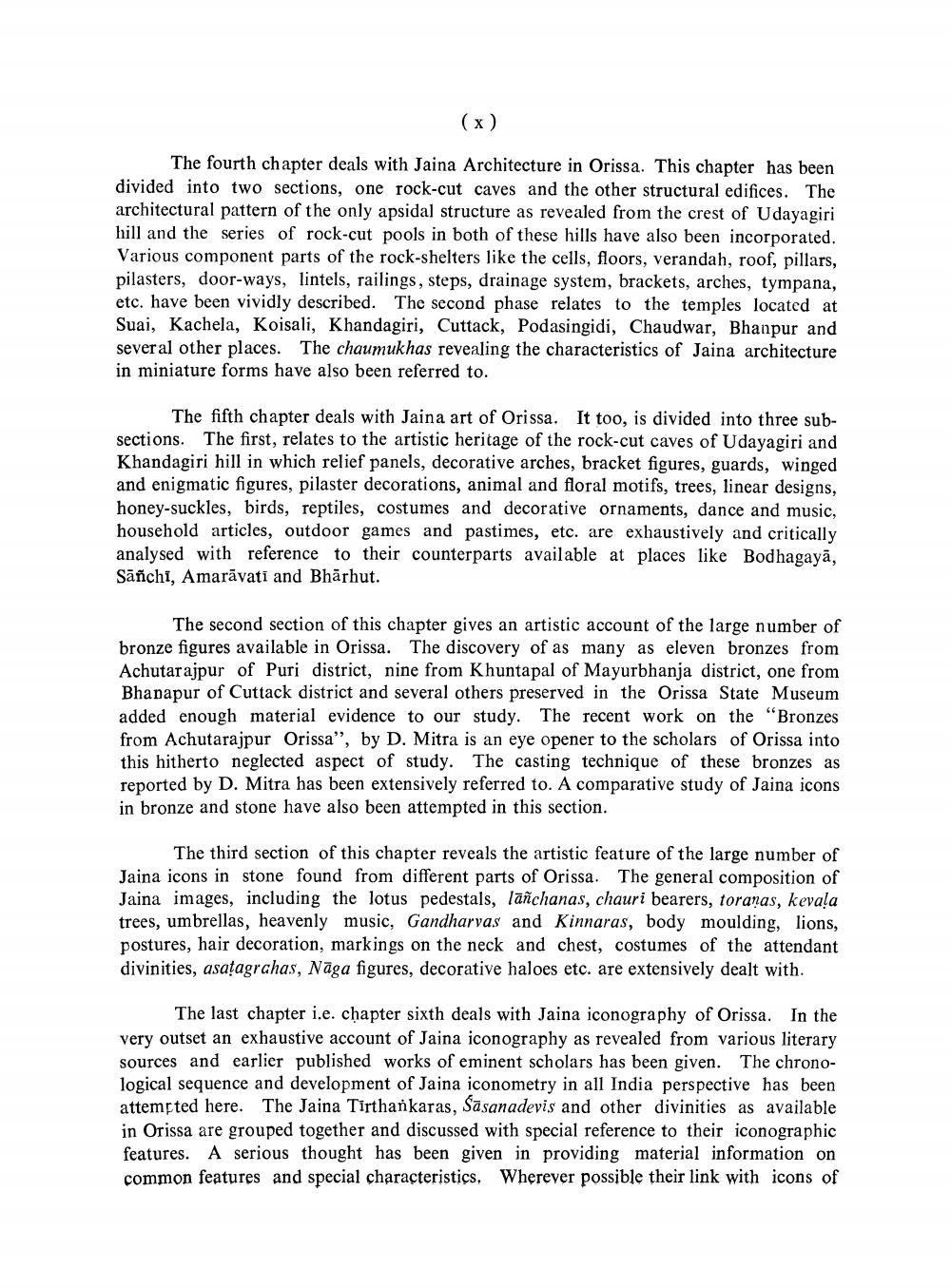________________
(x)
The fourth chapter deals with Jaina Architecture in Orissa. This chapter has been divided into two sections, one rock-cut caves and the other structural edifices. The architectural pattern of the only apsidal structure as revealed from the crest of Udayagiri hill and the series of rock-cut pools in both of these hills have also been incorporated. Various component parts of the rock-shelters like the cells, floors, verandah, roof, pillars, pilasters, door-ways, lintels, railings, steps, drainage system, brackets, arches, tympana, etc. have been vividly described. The second phase relates to the temples located at Suai, Kachela, Koisali, Khandagiri, Cuttack, Podasingidi, Chaudwar, Bhanpur and several other places. The chaumukhas revealing the characteristics of Jaina architecture in miniature forms have also been referred to.
The fifth chapter deals with Jaina art of Orissa. It too, is divided into three subsections. The first, relates to the artistic heritage of the rock-cut caves of Udayagiri and Khandagiri hill in which relief panels, decorative arches, bracket figures, guards, winged and enigmatic figures, pilaster decorations, animal and floral motifs, trees, linear designs, honey-suckles, birds, reptiles, costumes and decorative ornaments, dance and music, household articles, outdoor games and pastimes, etc. are exhaustively and critically. analysed with reference to their counterparts available at places like Bodhagaya, Sāñchi, Amaravati and Bhārhut.
The second section of this chapter gives an artistic account of the large number of bronze figures available in Orissa. The discovery of as many as eleven bronzes from Achutarajpur of Puri district, nine from Khuntapal of Mayurbhanja district, one from Bhanapur of Cuttack district and several others preserved in the Orissa State Museum added enough material evidence to our study. The recent work on the "Bronzes from Achutarajpur Orissa", by D. Mitra is an eye opener to the scholars of Orissa into this hitherto neglected aspect of study. The casting technique of these bronzes as reported by D. Mitra has been extensively referred to. A comparative study of Jaina icons in bronze and stone have also been attempted in this section.
The third section of this chapter reveals the artistic feature of the large number of Jaina icons in stone found from different parts of Orissa. The general composition of Jaina images, including the lotus pedestals, lañchanas, chauri bearers, toranas, kevala trees, umbrellas, heavenly music, Gandharvas and Kinnaras, body moulding, lions, postures, hair decoration, markings on the neck and chest, costumes of the attendant divinities, asațagrahas, Naga figures, decorative haloes etc. are extensively dealt with.
The last chapter i.e. chapter sixth deals with Jaina iconography of Orissa. In the very outset an exhaustive account of Jaina iconography as revealed from various literary sources and earlier published works of eminent scholars has been given. The chronological sequence and development of Jaina iconometry in all India perspective has been attempted here. The Jaina Tirthankaras, Sasanadevis and other divinities as available in Orissa are grouped together and discussed with special reference to their iconographic features. A serious thought has been given in providing material information on common features and special characteristics. Wherever possible their link with icons of




